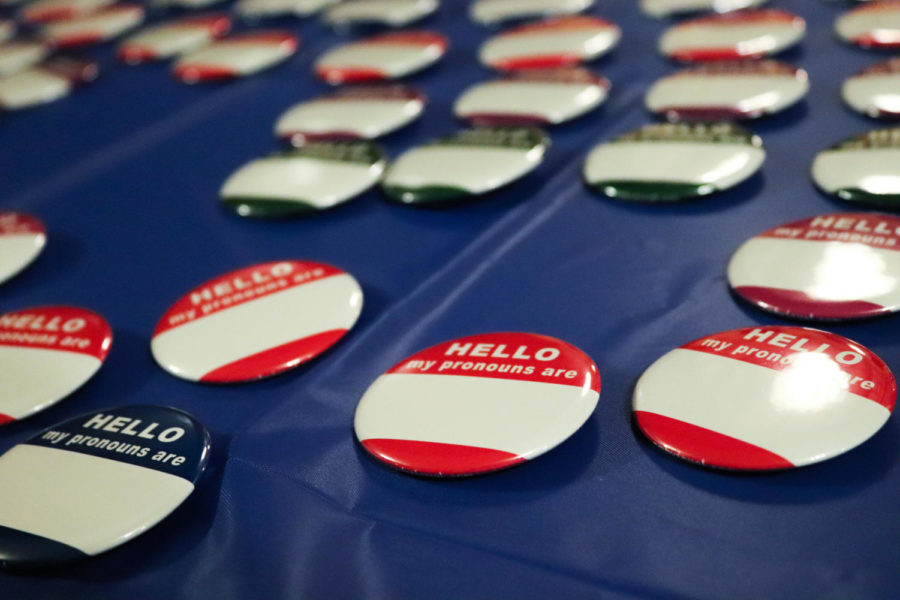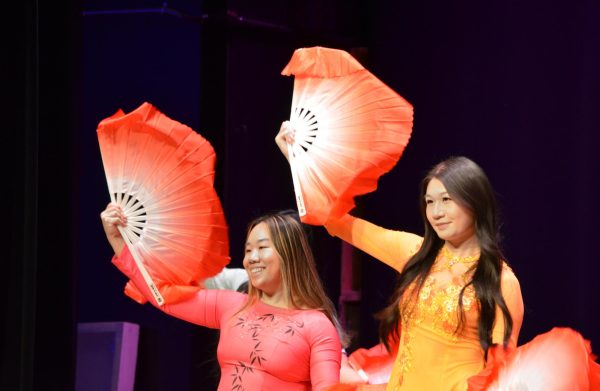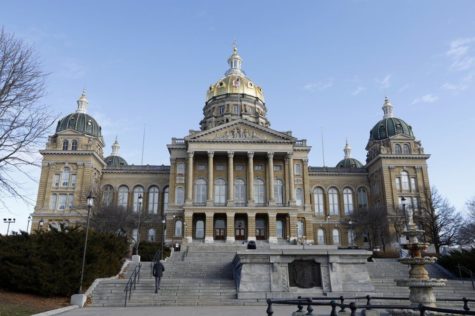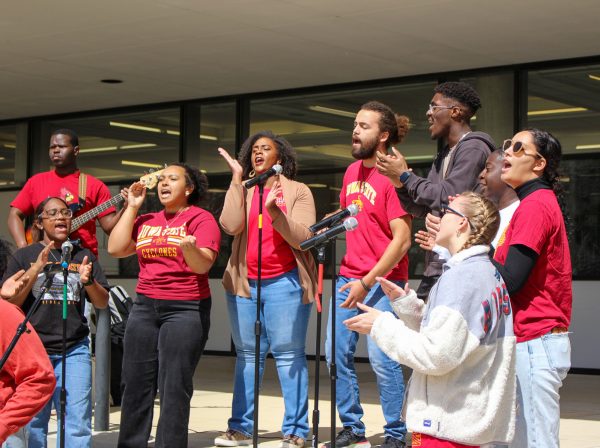Using inclusive pronouns on campus
Pronoun buttons are one way Iowa State works to implement inclusive language in a campus setting.
The lack of inclusive language creates obstacles to learning and creating a safe environment for many students on campus. Leading with those challenges, professors and students implemented various methods of inclusive language to use pronouns in and out of classrooms.
“I know that it can be very distracting and annoying when someone uses the wrong pronouns,” Sam Lavin, a senior in computer engineering, said. “Which, in a classroom environment, can hinder learning.”
When it comes to using inclusive pronouns, it is important for teachers to get to know their students’ pronouns instead of assuming, according to an article written by Carnegie Mellon University.
“On the first day of class, I ask students to use their pronouns in their introduction, and I use them throughout the semester whenever necessary,” Alissa Stoehr, a professor in the women’s and gender studies department, said.
Educators are moving toward implementing inclusive language because it can create a welcoming and supportive environment for students. However, this kind of language was not always used.
“I was always taught to use the masculine ‘he’ as a function of good grammar,” Michael Bugeja, a professor in the journalism and mass communication department, said. “Then times changed, and we switched to he or she because we wanted to be gender-inclusive. Now, we are more cognizant that sex, sexuality and gender identity are more fluid rather than consigned by society to male or female.”
Students feel that institutions at Iowa State have moved toward avoiding involving gendered language where it is not necessary.
“From my experience at Iowa State, generally any forms or paperwork I’ve filled out have done a good job of including inclusive language in their forms or simply just not asking for gender identity because most of the time it isn’t necessary,” Lavin said.
Sometimes individuals may get a person’s pronouns wrong or use gendered language when it should not be used. Bugeja encourages individuals to correct their language when mistakes are made.
“If people of good conscience want to use inclusive pronouns and, occasionally, might get it wrong, it is important to correct oneself in the moment or in the next encounter,” Bugeja said. “You live your ethics, and that means continuously learning how to be empathetic.”
Students share that inclusive language is more than just using an individual’s preferred pronouns. It also includes regarding a group in a non-gendered way.
“Inclusive language includes using neutral terms for large groups of people when you don’t know everyone’s specific preferences regarding how they want to be addressed,” Taylor Velgersdyk, a sophomore in environmental and climate science, said. “Educators being intentional about referring to the group in a neutral way will help students be more comfortable.”
This can look like using terms such as “folks,” “y’all” or “everyone” when addressing groups, Velgersdyk said.
“I believe that all my students should feel welcome in the classroom, and it is my responsibility as an educator to learn my students’ pronouns and use them accordingly,” Stoehr said. “The different types of pronouns that people can use have increased, and I always try to stay on top of these things.”
Even in group settings, using non-gendered terms when discussing relationships also helps students feel included, Velgersdyk shares.
“When talking about relationships, using partner instead of boyfriend or girlfriend is more open to non-gender conforming relationships,” Velgersdyk said. “Even though some relationships seem heteroromantic, it isn’t always correct to assume.”
Individuals share time in higher education, such as college and university, as time spent discovering themselves in a safe and focused environment.
“By being sensitive to language, we are compelled to look at others and communities,” Bugeja said. “College is a time of experimentation and identity. That usually is done in part with others in the university community.”
However, this does not mean inclusive language begins and ends in higher education, Velgersdyk said.
“Inclusive language in classrooms lets students learn about diversity in the classroom and prepares them to encounter differences in the world as well,” Velgersdyk said. “Young students will grow up with open minds about themselves and other people, which only promotes kindness towards others and their differences.”
It is important to use inclusive language because it is a way to show compassion to others, Bugeja said.
“We must use inclusive language because we care about others, not because our job or profession requires it,” Bugeja said. “True inclusivity sees others as important as the self. We live by those ethics.”
Your donation will support the student journalists of the Iowa State Daily. Your contribution will allow us to purchase equipment, send our student journalists to conferences and off-set their cost of living so they can continue to do best-in-the-nation work at the Iowa State Daily.












